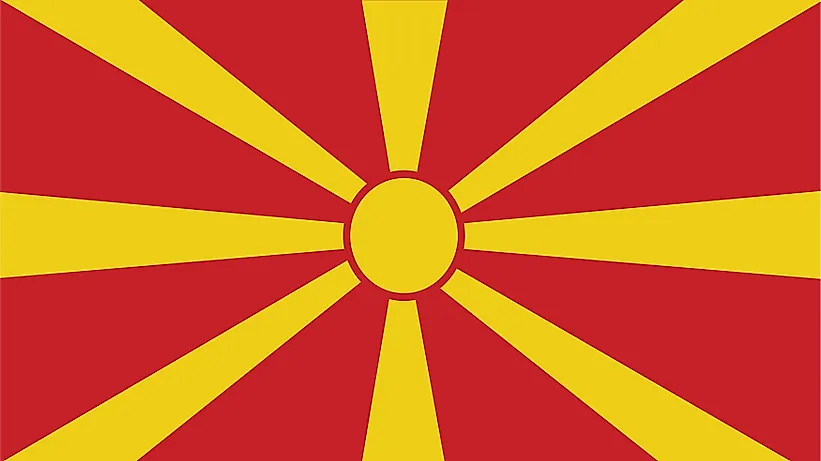
マケドニア
| 大陸 | ヨーロッパ |
| 資本金 | スコピエ |
| 人口 | 2,100,025 |
| GDP | $295億2000万ドル |
| 一人当たりGDP | $14,500 |
| ダイヤルコード | +389 |
| ISOコード(2文字) | MK |
| ISOコード(3文字) | MKD |
マケドニア 風景






マケドニアについて
バルカン文化と地中海文化が融合する国、北マケドニアへようこそ。人口約210万人、面積25,713平方キロメートルの北マケドニアは、傑出した歴史遺産と活気ある文化伝統を兼ね備え、さまざまな文明の架け橋となっています。
地理的特徴と自然の美しさ
北マケドニアの地理は、山脈から肥沃な渓谷まで、多様な景観を包含している。オフリド湖、プレスパ湖、ドジュラン湖という3つの大きな湖があり、ヴァルダール川流域が国の中心軸を形成している。
景観には、シャール山、ビストラ山、ペリスター山頂を擁するババ山といったドラマチックな山脈がある。変化に富んだ地形が複数の気候帯を生み出し、動植物の豊かな生物多様性を支えている。
保護地域には、国内最大のマブロヴォ国立公園や、ユニークな水生生態系で知られるユネスコ世界遺産のオフリド湖などがある。地理的に多様なこの国は、数多くの固有種と手つかずの自然環境を支えている。
文化遺産と伝統
マケドニアの文化は、さまざまな文明の影響を受けた豊かなタペストリーのようなものです。マケドニアの遺産には、注目に値する遺跡、ビザンチン様式の教会、オスマン・トルコ時代のモニュメントなどがあり、文化の交差点に位置するマケドニアの特徴を反映している。
伝統芸術には、複雑なリズムを特徴とする独特の音楽があり、特にタンブラやカヴァルといった楽器で演奏される。豊かな織物の伝統、特に民族衣装や絨毯には、何世代にもわたって受け継がれてきた複雑な模様や技術が見られる。
マケドニア料理はバルカン半島と地中海の影響を組み合わせたもので、タヴチェ・グラヴチェ(焼き豆)やアジュヴァル(赤唐辛子のレリッシュ)といった料理が特徴である。伝統的な家族団らんやお祭りは、今も文化生活の中心となっている。
歴史の旅
北マケドニアの歴史は、古代からさまざまな帝国を経て1991年の独立に至る。この地域は、古代マケドニア人、ローマ人、ビザンチン人、オスマン人など、数多くの文明の本拠地となってきた。
重要な時代には、古代マケドン王国、ビザンチン支配、オスマン帝国時代、ユーゴスラビア時代が含まれる。独立への平和的移行とその後の発展は、安定と進歩へのコミットメントを示している。
現代の経済状況
今日の北マケドニア経済は、伝統的な産業と成長するサービス業を兼ね備えている。同国は、経済改革と欧州市場との統合において大きな前進を遂げた。
最近のイニシアチブは、デジタルトランスフォーメーション、持続可能な開発、インフラの改善に重点を置いている。北マケドニアの戦略的立地と熟練した労働力は、地域の貿易と投資における新たな地位を支えている。
国際関係とグローバルポジション
北マケドニアは、欧州統合を目指す一方で、国際機関への積極的な参加を維持している。同国のNATO加盟とEU候補国としての地位は、西側諸国との協調へのコミットメントを反映している。
ご存知でしたか?
- オフリド湖はヨーロッパで最も古く深い湖のひとつで、数多くの固有種が生息している。
- コキーノ天文台は世界最古の天文台のひとつですか?
- マザー・テレサは首都スコピエで生まれた。
- この国は医療用の最高級のアヘン・ポピーを生産しているのか?
結論
北マケドニアは、歴史的遺産と現代的な願望が融合したユニークな国です。古代の遺跡から活気ある都市まで、伝統的な慣習から経済改革まで、北マケドニアは独自のアイデンティティを守りながら進化し続けている。経済発展や欧州統合などの課題に取り組む中で、北マケドニアは持続可能な成長を育みながら、文化間の架け橋としての役割に尽力し続けている。